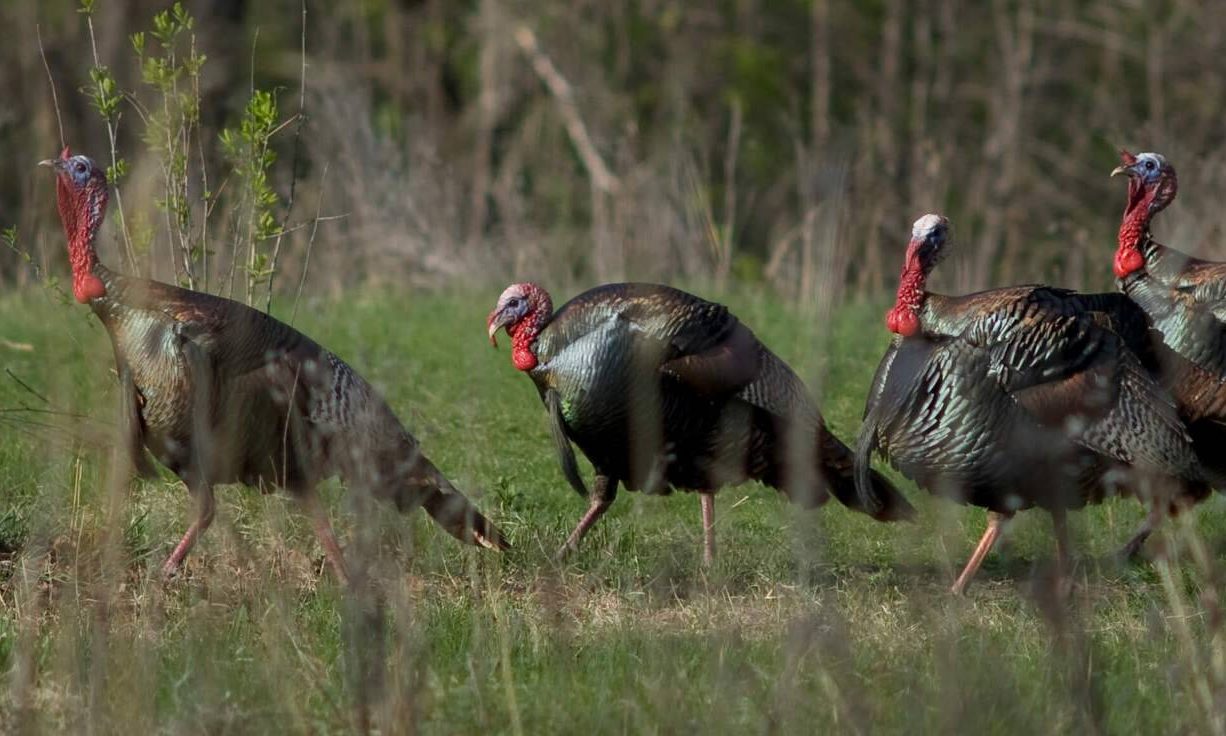Final Hour Gobblers

Final Hour Gobblers
By Aaron Stonehocker
I absolutely love late season turkey hunting. Some hunters head out religiously for season one or two in hopes of beating the ol’ toms at their own game. The logic: The birds have yet to learn the difference between counterfeit and authentic calls and perhaps a bit more aggressive in their pursuits of a loved one. I may be able to get on board with this idea, however I have gotten ON the scoreboard more times during seasons three and four. The late seasons have the unique challenge of being later in the breeding season, but these three tricks are a great for tipping the scales in the hunter’s favor.
Turkey Reaping
A growing trend in the turkey hunting world is something horror movies are made of. In this case, we are the evil villain and Mr. Thomas Thompson is the unsuspecting victim. I am referring to turkey reaping. The concept is almost too crazy to work, but the surreal footage of successful hunters capitalizing on this novel idea is enough to consider it proven.
Turkey Reaping is a modified version of the spot and stalk method. The hunter carries a modified strutting tom decoy that is either mounted to their bow or gun in such a way that they carry it front of them to mask the hunters body. Spotting a tom or group of birds, the hunter closes the distance while crouching behind the decoy. In some cases, the live bird will even charge the reaping hunter, making it a truly up close and personal encounter. The birds are completely unaware that the hunter is hiding behind the decoy and they walk right into their demise as the hunter reaps the benefits of this strategy. An Iowa company, The Turkey Fan, actually manufactures these nifty contraptions. Always nice to support Iowa based companies when we can!
Late Season Decoy Set
As the season progresses, the hope is that the toms are successfully breading the hens and ensuring our population recovery for the upcoming seasons. This means that many hens are at home nest sitting while their baby daddy is out running around looking for trouble in the pasture next door. When this happens, I like to give him a few offers he can’t resist. My favorite is using a decoy set consisting of 3-5 hens and a vibrantly red headed jake.
Position one of the hens and the jake away from the other three or four hen decoys. Set these two up in a very intimate style, and don’t be shy about it. The remaining hens should be approximately 15-20 yards away from the “breeding” pair, and they should all be in the feeding or sentry positions. Bring three or more calls with you to give the illusion of multiple un-bred hens cutting up around the jake and his new girlfriend. I like to use two diaphragm calls and a box call for this, but the preference is yours. Switch up the calls frequently and prepare for a fired-up tom to come bursting into the decoys in hopes of scoring a late season un-bred hen.
Last Call Before Night Fall
This is easily my favorite tactic to use during the final two seasons of the year. When the birds are unpredictable, one thing holds true: roosting time and location. This is one of the most effective places to catch a weary tom off guard and talk him into going home with you for the evening.
No decoys are necessary for this tactic because the birds are already going to be working their way to you and, more times than not, hens will be with the tom. Get into the woods about two hours before sunset and find a set up about thirty yards from the roost location. As the evening approaches, call to the hens with “kee-kee” calls mixed with soft puts, clucks, and purrs. The hens scratch their way to your location, and you can almost bank on a tom being behind them.
Getting it Done
Usually, I set up on the highest point I can find to give me a vantage over the incoming birds. I do this because the toms like to sneak in unannounced from a different direction than the hens. I have had three hens within 3 feet of me scratching through the leaves, and I almost missed the sneaky tom who was carefully watching me from about 10 yards away with only his upper chest and neck above the crest of the hill I was on. Lucky for me he made the mistake of blinking before I did and his rear end is now on my wall.
Late season hunting can provide some of the most exciting opportunities if you are willing to be creative. Less active hens mean better odds for you if you play your cards right. Using one of these tactics may be the hand you need to make an old tom fold. Good luck and be safe!

